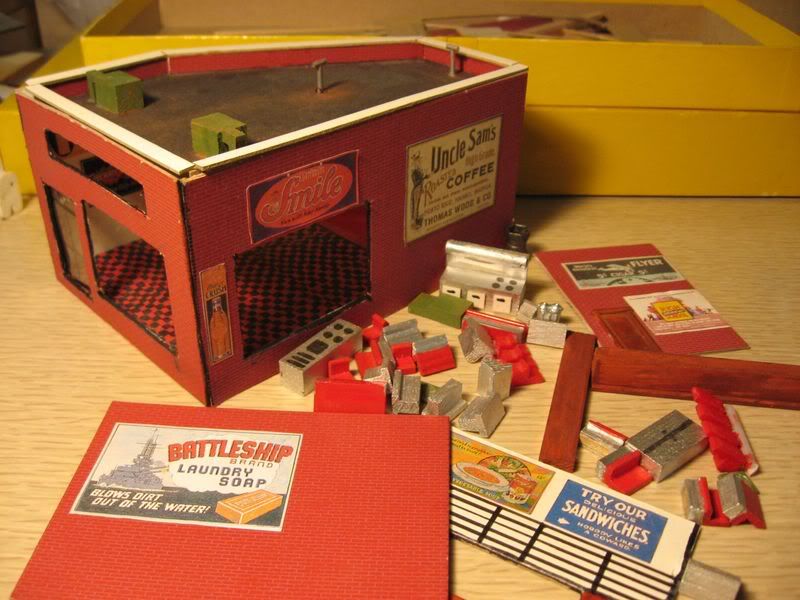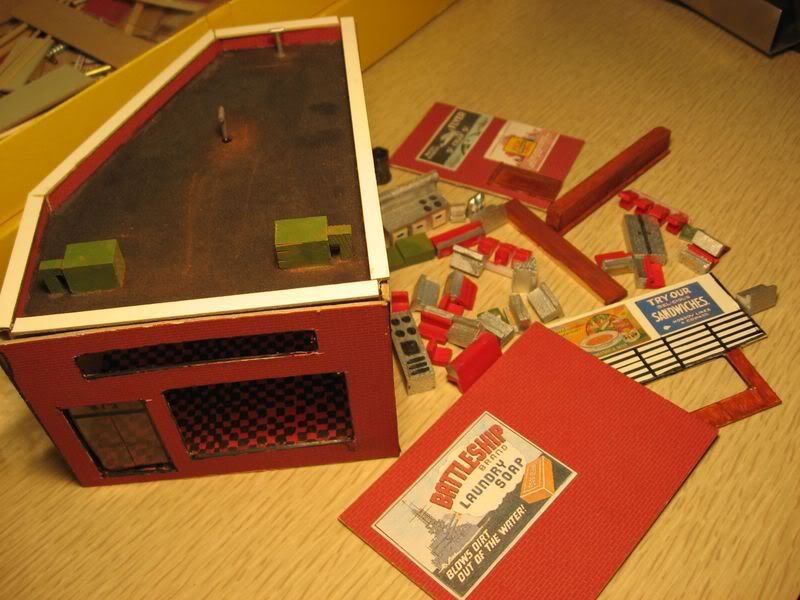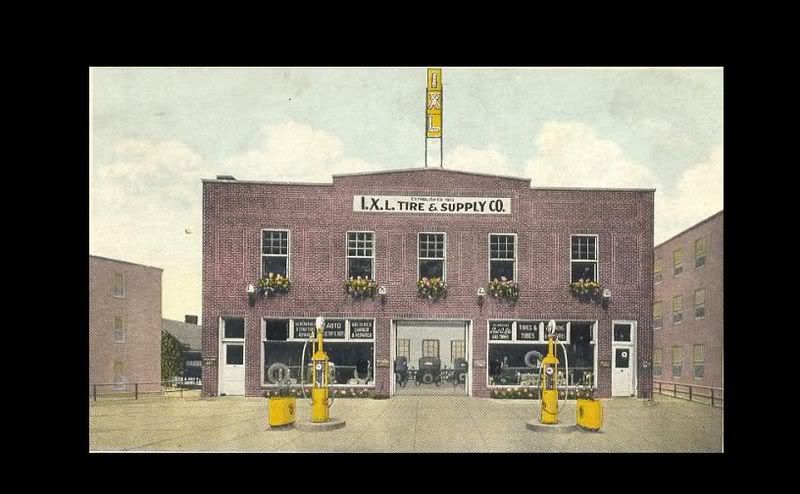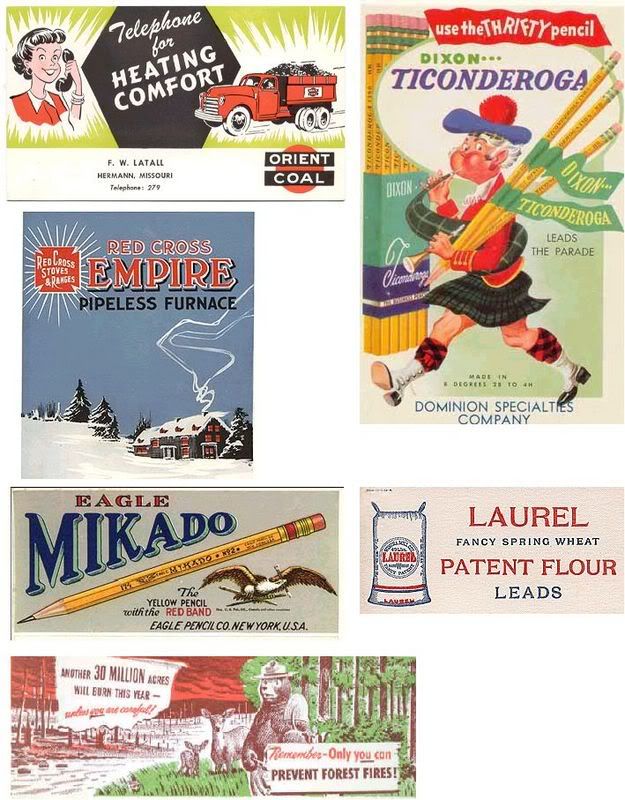Just to let you know… Bar Mills have halted production of their billboards and will not make them for the forseeable future.
Yes, I learned that several months ago when it was announced on their website. I’m not sure but I think it had to do with trademark infringements. It is unfortunate since there were a lot of those that I wanted to get. I broke one of my modeling rules which is when you see something you want, get it now because it might be gone tomorrow.
Really confused about this copyright “infringment” issue. If I was the CEO of a company I would love free advertisement, even if it’s not lifesize. The more you can get your products name out there the better. People are so concerned that someone else may make a profit that they will " cut off thier nose to spite thier face"
It’s simple: companies make HUGE amounts of money by either licencing their product logos for sale by others, or by restricting their use and selling merchandise themselves. Coke and Ford do huge business with non-core merchandising of their logos and trademarked goods, and Harley Davidson makes more money selling T-shirts and bottle openers than they do by selling motorcycles!
With this kind of money in play, it’s no wonder that companies are excitable when someone uses their logos and they don’t get a cut.
JL Innovative still seems to be making them.
http://www.jlinnovative.com/default1.asp?page=Billboards
Some of the fancy laser cut billboards will be missed however.
To carry Ray’s comment one step further, if the company owning the logo made an exception for Bar Mills, they’d have a real legal mess on their hands with all the other users paying license fees for logo use.
If you took all the lawyers in New York and laid them end-to-end from Manhattan to London…it would probably be a good idea.
Well…the situation may not be quite as straight forward as it’s being made to sound here.
I have it on very good authority that Art has basically sold off this facet of his business to another potential maker because it was proving to be somewhat of a problem. So, we may see these billboards return at some indeterminate point in the future from another source.
CNJ831
I copy signs & billboards off ebay. Go to collectables-advertising or collectables-paper, then search for signs, copy & paste image to a publisher desk top, crop & size for your scale ( HO for me ). then save to a file. Then you can print on paper, cardstock or full sticker page. With full sticker just cut out, trim and stick to a stiff backing or right to a building. With paper or cardstock you can use double sided tape or glue of your choice. If you print on photo paper you get a glossy like sign. You can build the frame from wood stick matches or scale lumber.


These signs on the cafe I scanned from a sign catalog.

You can also copy people, Background buildings, interiors, ect.


This is off a postcard found on ebay under collectables/paper/postcards. These are great to use as background buidings.

These are old ink blotters copied off ebay, found under collectables/paper/ink blotters. Most are rectangle and make nice billboards.
The other issue here is that companies spend a lot of money trying to buildup a certain image for their brand. Enforcing copyrights is the only way for them to prevent misuse of their brands in ways that undermine their image. Think Mickey Mouse condoms as an extreme example. The solution to this is to execute license agreements where the Company grants permission for their trademark to be used in specific circumstances. However, I imagine that companies like Coca-Cola don’t want the hassle of negotiating and tracking these agreements and instead opt for just suing anyone who infringes.
Tomkat
Thanks for the tip. —Nice work rich
Building on Tomkat-13’s post, I’ve found you can also pick up company logos, product ads, and photos from company web sites. Great for everything from banks to candy bars. Some venerable companies even have historical archives on-line that you can access, that include vintage ads and products. As for the issue of companies clamping down on the unauthorized use of their logos, I would think that generally the actual return on royalties is exceedingly small in proportion to their main business, and that their gain in consumer goodwill far exceeds the monetary consideration. For a huge corporation, the $1 million in royalties (should it reach that level) accrued from hobby sales is just a rounding error. When it comes to protecting their trademarks, I would think that all companies have the option of choosing who they take action against and who they don’t - it’s a matter of whether the use of their logo causes them harm. Cheers.
Then how would this relate to the UP / MHT trademark issue of last summer?
What I was trying to say is that small companies like Bar Mills cannot afford to pay a licensening fee. I think that UP was charging $5 per item, plus other concessions. If bar Mills tried to add that to a billboard they wouldn’t sell enough to keep production up. It seems like the the owners of the trademarks are more interested in not letting anyone use thier trademark than making a profit from it, which is thier perogative. My original statement still stands. I would like to see my product’s name in print even if I didn’t profit from it, knowing that a small company would make thier product too costly if they had to pay
as far as letting everyone else use thier trademark free, they have the right to negotiate each request separately. They are under no obligation to treat every request the same. Jerry
Then how do you explain the fact that Harley-Davidson makes MOST of its money through licensing? Or the fact that Coke makes MILLIONS (multi) from their licensing? Or the fact that MANY movies make more money through licensed products than through the movie itself (think Star Wars for a good example). Product placement on non-core merchandise is HUGE business that rakes in BILLIONS of dollars worldwide. No one in the USA has seen an episode of “Hello Kitty”, but you can’t sneeze in an 11 year old girl’s room without hitting at least one HK product.
Selling company logos is BIG business, and definitely not an “accounting error” these days. Where the UP screwed up was in the fact that they were going after a niche sales group (us) and tried to protect dead brand logos instead of their active ones. If UP shield and wings T-shirts became a teen rage all of a sudden, I don’t think anyone would think twice if they went after licensing agreements to rake in $20 million in associated fees for its use. Let’s face it: no one complains about the extra price tacked onto Athearn John Deere tractors.
Yikes, I knew this was a contentious issue, and maybe should have kept my mouth shut.
Of course we all recognize the power and marketability of logos and that particularly applies to worldwide lifestyle icons like Coke and Harley Davidson. The point has been well made that UP for example got everyone’s dander up by applying its licensing fees to such a niche (and supportive) demographic (model railroaders). I don’t pretend to know the details of the market for this hobby, and maybe I’m way off base in my 'rithmetic, but based on the information I saw in January 07 Model Railroader, UP was demanding a 3% royalty on products that used its logos. This would suggest that upfront payments aside (if any), at a 3% royalty, the model industry would have to sell $500 million annually in UP-labeled product to generate $15 million in licensing fees for UP - for UP, a company that posts revenues of over $15 Billion, that $15 million in model RR licensing revenues is less than 0.1% of their total. Over time, I would expect that percentage to get even smaller, assuming that UP’s core business grows faster than the model RR business. At the end of the day, if I understand the January 07 blurb in Model Railroader correctly, UP has agreed to royalty-free licenses provided product quality is acceptable. Anyway, the main point I was trying to make is that all companies have the option of deciding whether the use of their logos helps them or harms them, and can act accordingly. That being said, I can only hope that in the future the big RR corporations view the use of their logos in the model industry as “help”, not “harm”.
In writing this, it prompts the question: how big is the global model RR market? Any ideas?
Cheers.
An example would a highly paid actor, shirtless, sweat dripping from his body, guzzling down an ice-cold Coke beside his bulldozer…or whatever. Surely we wouldn’t expect Coke to get that exposure for free. So, they pay. In return, whenever a DVD sells, Coke gets a return.
Well in the same concept of “trademark infringement”, Ford Motor Company is trying to step on the “Mustang” car restoration outfits for using the name
“Mustang” in their ads or their names.
BUT, I know of a possible HUGE lawsuit in the making by an aircraft manufacturer against FORD for using pictures of a P-51 Mustang airplane in some of their former Mustang car advertisements, and absolute proof that Ford used certain “design lines” taken from the famed P-51 fighter plane in making the original 1964 1/2 and 1965 Mustang.
If you put a Ford Mustang ( 1965 to 1966 ) next to a P-51 , look REAL CLOSE at all the lines of both the car and the airplane.
Did the aircarft manfacturer (now owned by someone else) ever get a penny of royalties from Ford, and why did they use the name Mustang, and use a “horse emblem” when the Mustang airplane represented speed and power?
Sneaky way of getting around the “infringment” issue.
You betcha they didn’t!!!
So who RIPPED WHO OFF???
The big guys just want to use their muscle to make money off the little guys.
I think some of these companies would be flattered and impressed that Bars Mills chose to make signs of of their companies, more like good advertisement for them, even though it was in miniature scales.
But in our lawsuit happy, get rich quick society, I am not surprised that Bars Mills got stepped on by the big guys .
Unfortunately, I think the way trademark law is set up, companies MUST protect their trademark against ANY infringement. As I understand it, if they do not protect their trademarks, their trademark becomes diluted and becomes unenforceable.
Oh, and by the way Ed - about the P-51. It was named the “Mustang” by the RAF - not sure whether it would be possible for the manufacturer to sue over use of the name?
Lawyers create fear in other lawyers so the lawyers of the rights holder take assertive action to protect themselves from lawyers seeking to overturn those rights. In the case of miniature billboard advertising, failure to have an agreement in place between the advertiser/copyright holder and the miniature billboard maker “could” create a precedent of not protecting your copyright once in the public domain. Failure to enforce one’s copyright could jeopardize the copyright’s existence(the fear factor). The UP/Mike Wolf-MTH agreement re UP logo usage on model trains is an example of a creative solution to this rights issue. As an aside, the UP Intellectual Properties Dept may have been seeking to demonstrate to management that not only were they aggressively protecting UP copyrights but they could also bring him new revenues by doing so.(a dollar here, a dollar there…yada, yada)
A rather “concrete” example of exercising one’s rights to protect those rights in the future is Rockefeller Center in New York City closing a short connecting street on its property to traffic once a year. The street is the property of Rock Center but is open to public use as a convenience to traffic flow. The closure to public traffic once a year demonstrates that Rock Center is exercising its property rights and has not forfeited its rights to this property. Failure to exercise this control could lead to seizure by New York City due to obvious surrendering of control by the property owner. The arguement for seizure by NYC in this worst case scenario(for Rock Center) could be to ensure the public safety due to abandonment by the property owner.
Paraphrasing one of the myriad of lawyer jokes:
A small town has one lawyer who is barely able to make ends meet with his practice. Another lawyer comes to town and establishes a practice and they both have more business then they can handle. Point being: law
They might. Remember years back when the rock group Chicago Transit Authority had a record and became famous? Well, the real city entity of the same name in Chicago raised a stink and the group had to change it’s name. It’s the group we now know as Chicago.